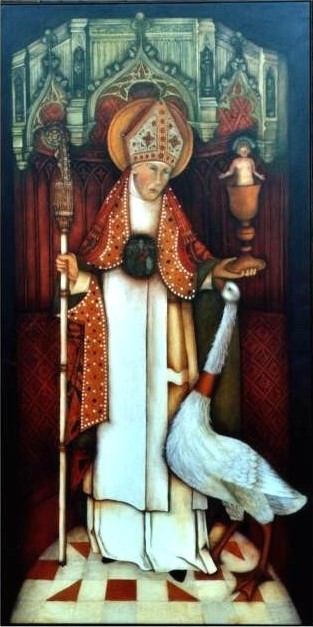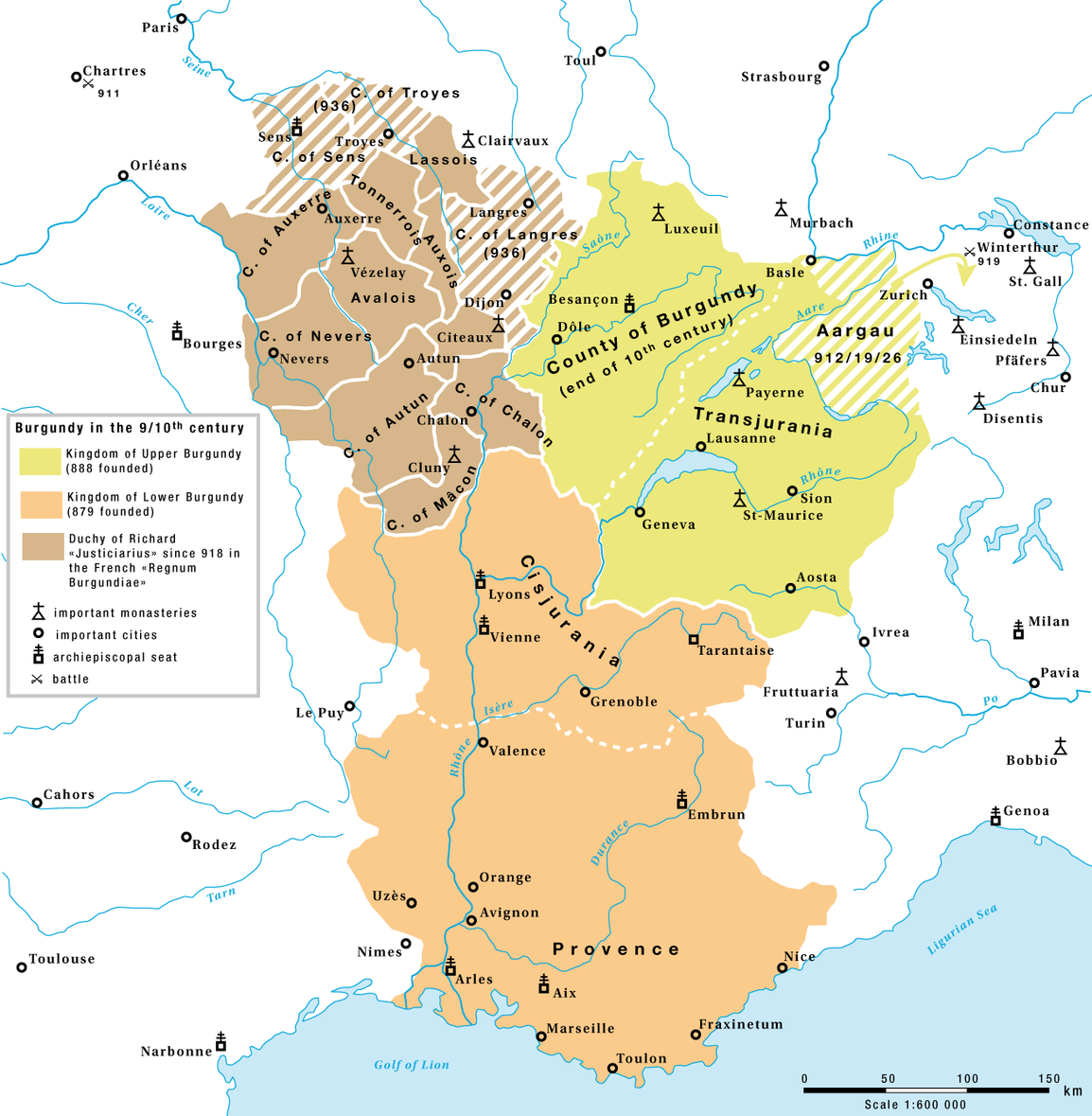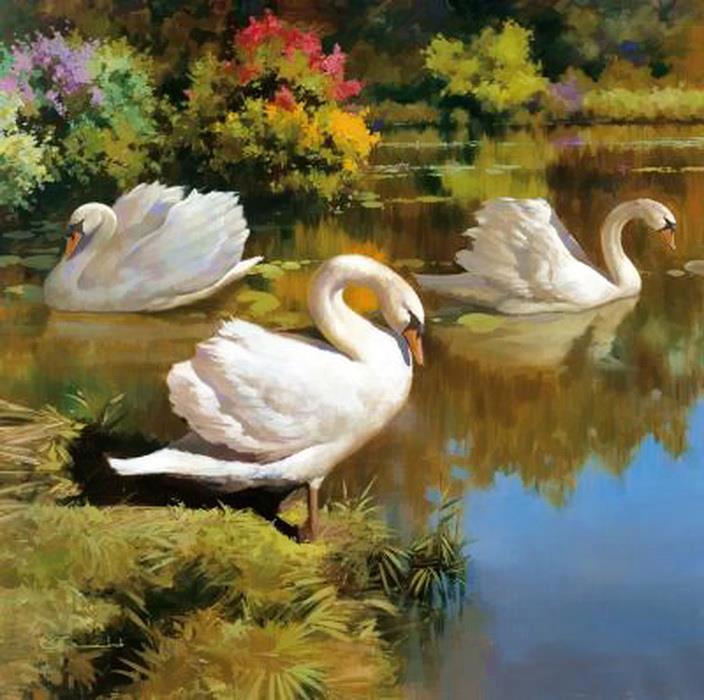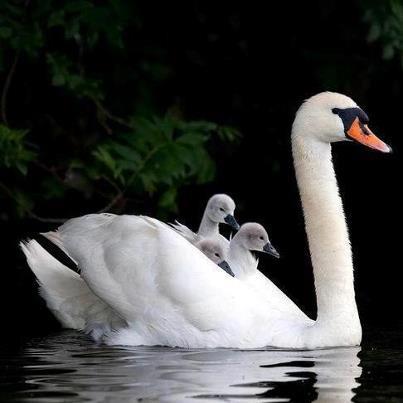The swan is the symbol of Saint Hugh of Avalon (also called Saint Hugh of Lincoln). St. Hugh was born about the year 1140, of a knightly Burgundian family which took its name from Avalon, a place about three miles distant from Grenoble. His father, William, Lord of Avalon, was sprung from one of the noblest of Burgundian houses. Hugh was sent by his father to be educated at the Priory of Villarbenoit, near his father's castle.
Anton's direct ancestor, Henry II, King of England, summoned a council of bishops and barons to Eynsham Abbey in 1181, with the intention (amongst other matters) of filling several vacant bishoprics. One of these, Lincoln, had been vacant for the preceding 16 years, and Henry nominated Hugh of Avalon, the prior of Witham, for the post as Bishop of Lincoln.
After his demise,Hugh's body was returned to Lincoln cathedral, the journey taking six days, where the kings of England and Scotland (John and William respectively) assisted in carrying his bier into the building.
St. Hugh's emblem is a white swan, in reference to the beautiful story of the swan of Stowe Manor which contracted a deep and lasting friendship for the saint. This swan apparently took up residence there on the day of Hugh's installation at Lincoln, and formed a special attachment to the bishop. Hugh is even said to have been guarded in his sleep by the loyal bird. The story also runs that the swan displayed extreme grief on Hugh's last visit to Stowe in 1200, just before he traveled to London and just before he died.
In 1230, André Dauphin acquired the village and castle of Avalon and its surrounding territories from the Romestang noble family. Note: this castle is not related to the mythical Avalon of Arthurian legends in any ways. At least, this Avalon castle did actually exist! Avalon castle played a key role during all Middle Ages as the first line of defense of the Dauphiné province against Savoy (the border is just 3 kilometers (2 miles) away). Built on the site of an 11th century motte, the castle has kept its circular aspect and is extremely small. The fortified village built next to it was the home of several noblemen who possessed their own manors. The castle fell down to ruins during the middle of the 14th century, after the end of the war between Dauphiné and Savoy.
Anton's direct ancestor, Henry II, King of England, summoned a council of bishops and barons to Eynsham Abbey in 1181, with the intention (amongst other matters) of filling several vacant bishoprics. One of these, Lincoln, had been vacant for the preceding 16 years, and Henry nominated Hugh of Avalon, the prior of Witham, for the post as Bishop of Lincoln.
After his demise,Hugh's body was returned to Lincoln cathedral, the journey taking six days, where the kings of England and Scotland (John and William respectively) assisted in carrying his bier into the building.
St. Hugh's emblem is a white swan, in reference to the beautiful story of the swan of Stowe Manor which contracted a deep and lasting friendship for the saint. This swan apparently took up residence there on the day of Hugh's installation at Lincoln, and formed a special attachment to the bishop. Hugh is even said to have been guarded in his sleep by the loyal bird. The story also runs that the swan displayed extreme grief on Hugh's last visit to Stowe in 1200, just before he traveled to London and just before he died.
In 1230, André Dauphin acquired the village and castle of Avalon and its surrounding territories from the Romestang noble family. Note: this castle is not related to the mythical Avalon of Arthurian legends in any ways. At least, this Avalon castle did actually exist! Avalon castle played a key role during all Middle Ages as the first line of defense of the Dauphiné province against Savoy (the border is just 3 kilometers (2 miles) away). Built on the site of an 11th century motte, the castle has kept its circular aspect and is extremely small. The fortified village built next to it was the home of several noblemen who possessed their own manors. The castle fell down to ruins during the middle of the 14th century, after the end of the war between Dauphiné and Savoy.






